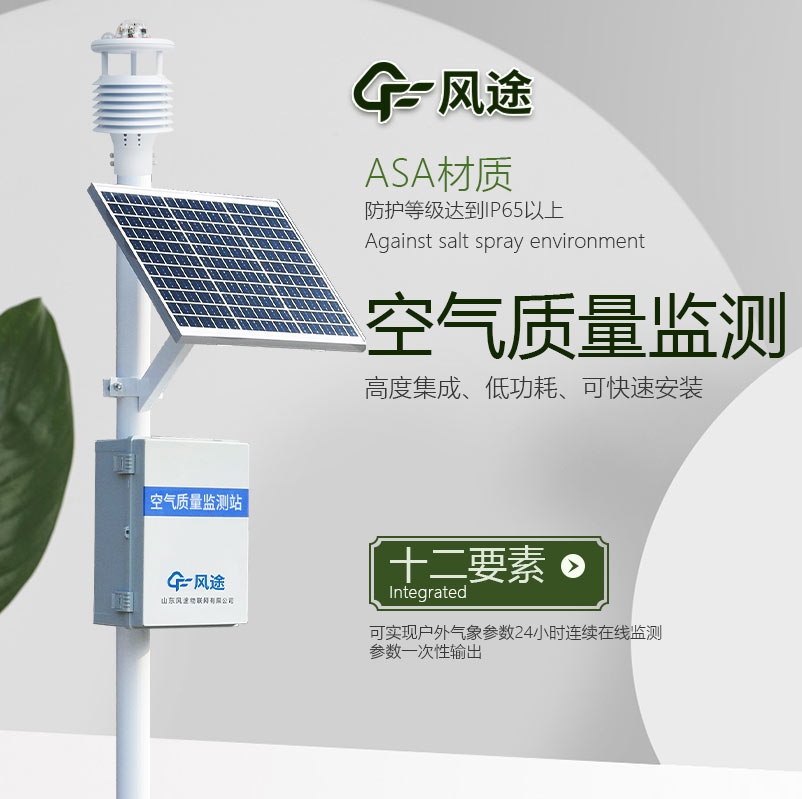Meteorological environment monitoring equipment supplier
Insist on doing high-precision customer favorite technology products
"According to the gridded monitoring platform, the PM10 concentration in XX area is significantly higher than other areas. The current real-time wind direction is northerly easterly ......" Seeing the data fed back to the background from the air quality monitoring station, the staff quickly released the relevant information in the air safeguard workgroup and organised the gridded management team and professionals to immediately go to the site to investigate the pollution sources. The aim is to find and reduce the source of air pollution as soon as possible in order to maximise the improvement of air quality.
The Ambient Air Quality Monitoring Station (AQMS) mentioned in the above is an automatic monitoring station designed to monitor and track ambient air quality. It continuously collects and measures data on various air pollutants, including sulphur dioxide, nitrogen dioxide, particulate matters, carbon monoxide and ozone. These data help to understand the air quality situation so that necessary measures can be taken to improve air quality.
The ambient air quality monitoring stations operate round the clock, collecting data continuously and uploading them in real time. Staff can log on to the Grid-based Precision Monitoring Platform at any time to check the ambient air quality status of each grid area, identify potential problems in a timely manner and quickly issue corrective actions to prevent further development of polluting behaviours. This real-time monitoring and rapid response mechanism helps ensure continuous improvement in air quality.
Use existing facilities, such as standing poles, to carry relevant equipment. A scientific arrangement of monitoring points is carried out in a certain area, forming a complete regional monitoring network through multi-point monitoring. This network can be used for ambient air pollution trend analysis, tracing the source of pollution, real-time monitoring, rapid detection and rapid treatment of air pollution problems in a more refined way to help air pollution prevention and control efforts. "According to the grid-based monitoring platform, the PM10 concentration in XX area is significantly higher than that in other areas. The current real-time wind direction is north by east ......" Seeing the data fed back to the background from the air quality monitoring station, the staff quickly released the relevant information in the air safeguard workgroup and organised the gridded management team and professionals to immediately go to the site to investigate the pollution sources. The aim is to find and reduce the source of air pollution as soon as possible in order to maximise the improvement of air quality.
The Ambient Air Quality Monitoring Station (AQMS) mentioned in the above is an automatic monitoring station designed to monitor and track ambient air quality. It continuously collects and measures data on various air pollutants, including sulphur dioxide, nitrogen dioxide, particulate matters, carbon monoxide and ozone. These data help to understand the air quality situation so that necessary measures can be taken to improve air quality.
The ambient air quality monitoring stations operate round the clock, collecting data continuously and uploading them in real time. Staff can log on to the Grid-based Precision Monitoring Platform at any time to check the ambient air quality status of each grid area, identify potential problems in a timely manner and quickly issue corrective actions to prevent further development of polluting behaviours. This real-time monitoring and rapid response mechanism helps ensure continuous improvement in air quality.
Use existing facilities, such as standing poles, to carry relevant equipment. A scientific arrangement of monitoring points is carried out in a certain area, forming a complete regional monitoring network through multi-point monitoring. This network can be used to conduct ambient air pollution trend analysis, trace the source of pollution, monitor in real time, quickly identify and quickly deal with air pollution problems in a more refined manner, and provide assistance in air pollution prevention and control.
